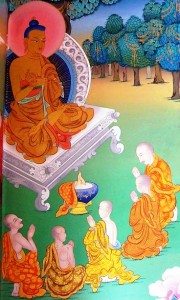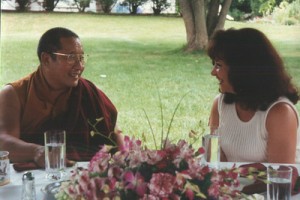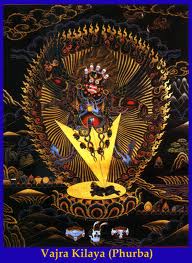An excerpt from a teaching called How Buddhism Differs from Other Religions by Jetsunma Ahkon Lhamo
Many people have gone to teachers and said, “What was I in my past life? What kind of being am I?” thinking that they are different somehow and that this is important. It’s really not the case. We are all exactly the same. But a lot of times the people will go to the teacher and ask questions like that. Buddha Shakyamuni’s answer was, “If you want to know who you were in your past life, look in the mirror.” Not necessarily at your physical appearance, and how your mascara is and that sort of thing. Look at who you are. Look at your life. Look at what you’ve accomplished. Not what you’re spinning in your head that you’re going to accomplish, but what you have accomplished. Then you can begin a certain analysis.
Let’s say that you are chronically poor. You tend to work wage jobs, and can’t get the big jobs, and just can’t make the money thing work. It’s a chronic condition. Most people think that the best thing to do is to go looking for the fabulous job or meet the fabulous man with the big money or something like that so you can get rich. That kind of thinking will keep you in exactly the same position you’ve always been in, and it will never change.
If you find yourself in a state of chronic poverty, you must understand that cause and effect relationships are operating here. You are now reaping the result of a cause that was created maybe early in this lifetime, more likely in another lifetime. This is why it’s so hard, because you can’t see it. We don’t know what happened in our last life or ten lifetimes ago. We really don’t know what the cause is.
Again the Buddha says that this is where analysis is very useful. So, we look and we say, “Well, I’ve always been poor. It’s always been an issue. So, what can I do to solve this problem?” Is hoping for a rich person or a rich job to come along really the solution? Actually, not. What you should start doing if you are chronically poor, is to give all you can to the poor. The shirt off your back if you have to. Now, people will try that and they’ll come back to me and say it didn’t work. How long did you try it? It took you lifetimes to get this habitual. You’ve got to work at it awhile. You can’t expect to just be kind for a couple of weeks, and then boom! We’re home and dry. It’s not like that. You have to actually take the grasping energy that you’re feeling, “I want the money. I want the money. I want the money.” And turn it around into “I give what I can give.” If it’s a quarter, if it’s twenty cents, if it’s a penny, if it’s a hug, if it’s some extra clothes to people who don’t have clothes, or a warm blanket in the wintertime. Anything. It doesn’t have to be big bucks, but you develop the habit of generosity to the degree that it outweighs that graspiness that says, “When am I gonna get rich? When am I gonna get rich? When am I gonna get rich?” By the time you’ve changed that habit, things are changing in your life. But until you change the habit, nothing will change. It’s all about our habitual tendencies. There is nobody that knows this better than a recovering alcoholic.
I think recovering alcoholics make the best students, because they understand what habitual tendency is all about. And they understand what addiction is all about too, including the addiction to “gimme, gimme, gimme. I want it. I want it. I want it. More, more, more.” That’s an addiction.
We begin to break our habitual tendencies and turn them around, and we change the addiction. At that point, we begin giving. When you start giving to others, generally, you give to people who have less than you. And one of the first things it does is make you realize how much you actually have. Because we don’t generally realize how much we actually have. Impoverishment is in here. So, when we begin to act kindly and generously towards others and give what little we have, the grasping hand turns around and becomes a giving hand. The mind relaxes about the issue of having. And that clears the way for the ripening of virtuous karma. Virtuous karma will bring us happiness, joy, money, whatever it’s tuned into. Whatever it is the result of. But it’s the graspy neediness that keeps us from giving and makes us so unhappy.
© Jetsunma Ahkön Lhamo
![broken-chain-small[1]](https://www.tibetanbuddhistaltar.org/wp-content/uploads/2010/09/broken-chain-small1-300x207.jpg)








